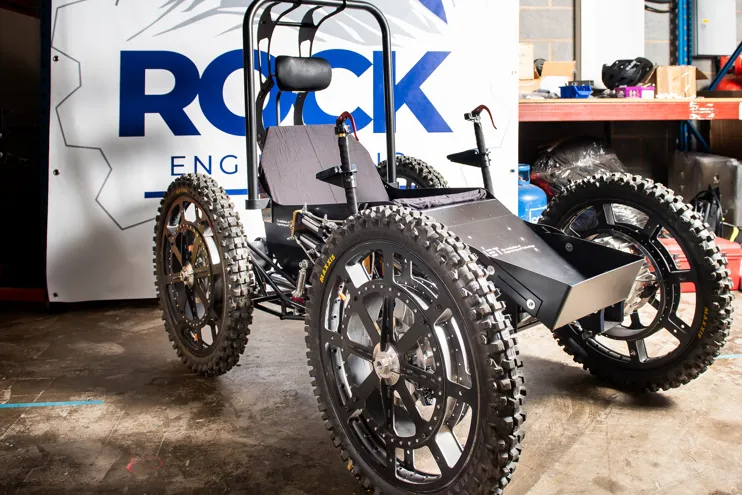Five minutes with Associate Member Elliot Dason-Barber
Using engineering to break down barriers and create a more inclusive environment has always been an important ambition for us. Elliot Dason-Barber BEng CEng and Andrew Miller BEng MSc, co-owners of Rock Engineering Limited, share the same passion for equality, diversity and inclusion and have created a first-of-its-kind power mobility chair that tackles tough outdoor terrain, hoping to change the game for accessibility.
Can you tell us about Project RockClimber™ and what inspired its creation?
Our inspiration came about through a chance meeting with disabled adventurer and military veteran, Nick Wilson, who wanted to carry out the unprecedented challenge of climbing Yr Wyddfa (Mount Snowdon) in a specially designed power chair. He hoped to highlight the barriers that he and others with disabilities face in their everyday lives, and thus Project RockClimber™ was born!

Can you tell us about the unique engineering solutions incorporated into the chair and how it handles the terrain?

Ninety per cent of the design is completely unique, based off our combined decades of motorsport and off-road experience. There are other off-road wheelchairs out there, and they are all very good in their own way, but we like to say that comparing RockClimber™ to other off-road power chairs is like comparing a mountaineer with a trail runner – they are two very different things. For it to be able to carry 300kg up 1,000 metres over a distance of 10km unaided, we had to consider both high-level and macro problems of terrain and obstacles. In our latest attempt in July, it did just that and we managed to scale over 90% of the mountain – 1,020 of the 1,085 metres – with Nick in the chair, completely unaided.
Key features of RockClimber™ include:
- Stability: The centre of mass is kept low and positioned to maintain tyre load. The wheelbase can extend 400mm rearward for extremely steep terrain, maintaining stability at climb angles greater than 60 degrees (in theory!)
- Traction: The vehicle has an electric four-wheel drive system to maximise traction. The system can bias torque as the climb angle increases. Reducing sprung mass and increasing un-sprung mass, coupled with a custom high articulation suspension, maintains higher tyre loads for improved traction.
- Torque: One of its biggest strengths is its 1,600Nm of torque. Its custom 100:1 reduction gearbox allows for extremely high levels of torque from low-power, high-efficiency electric motors. It can achieve 6km/h, whether on the flat or climbing, on a 40-degree slope. In that situation, our biggest challenge would be the safety team trying to keep up with Nick!
What were the biggest challenges faced during the design and development phase?
The main challenge was developing a unique steering system that would be unaffected by obstacles during the climb. Our solution was a bespoke, in-house-designed passive hydraulic system. Unfortunately, the steep terrain encountered during the climb was challenging to simulate fully and the steering failed on our first attempt.
Despite this, other components performed well, so ahead of our second run we went back to the workshop and re-engineered solutions for the steering, tyres and brakes.
What are the future plans for the RockClimber™ technology? Can it be adapted for everyday use?
Absolutely! We are already running a focus group with some powerchair users and have developed a totally new powerchair that we’d like to see go into production. I can’t speak on behalf of powerchair users, but our intention is to show that with the right focus, it is possible to improve the accessibility and mobility of powerchairs. The term ‘inclusive engineering’ was new to me two years ago, but I now think it is the fundamental design approach that should be used for all new products. We hope that the project can shine a light on the sector, and hopefully attract large companies, and young engineers, who can make a real difference.
